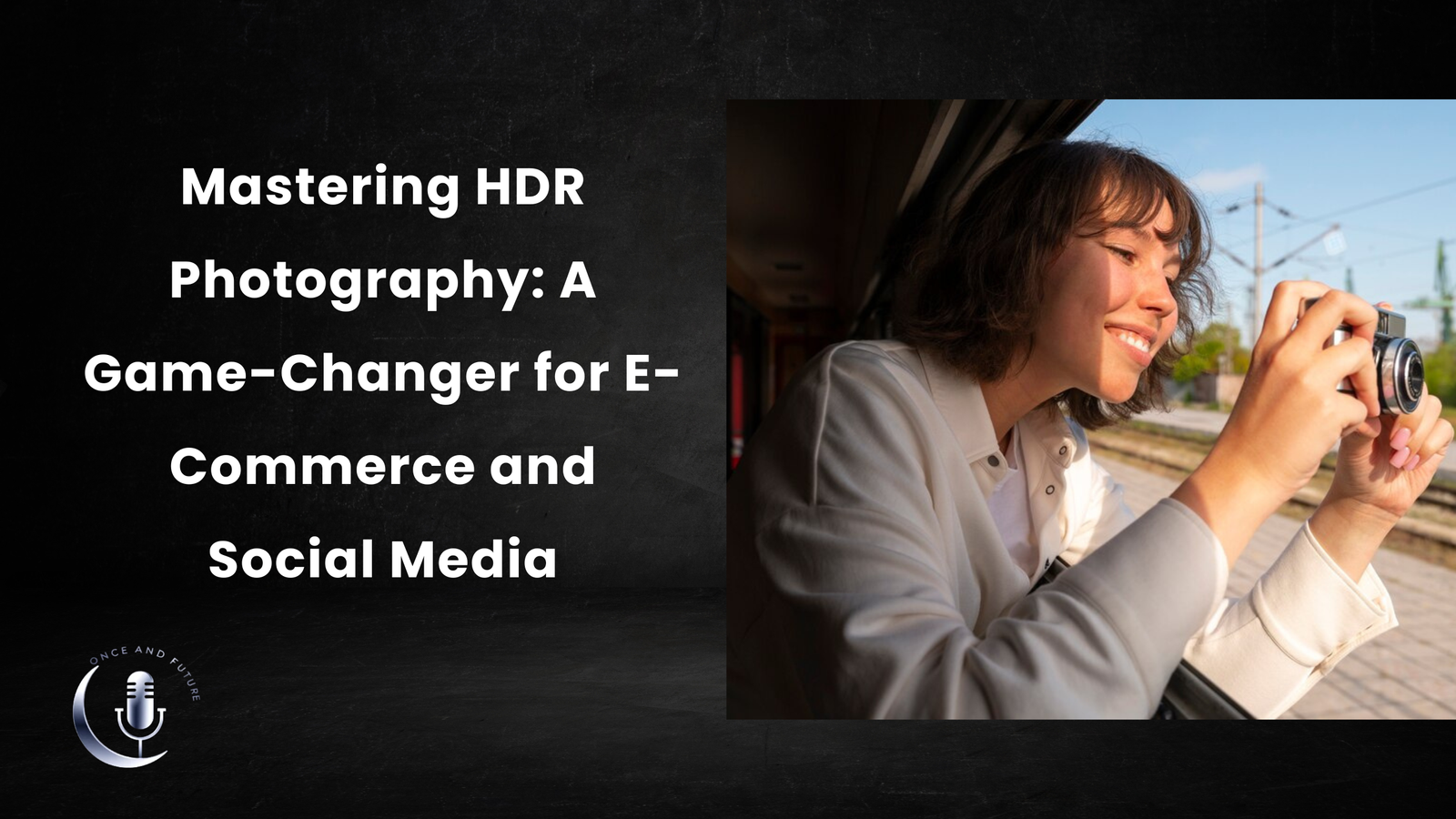Captivating visuals have become non-negotiable for brands aiming to make an impact. High Dynamic Range (HDR) photography is a transformative technique that brings images to life by capturing intricate details and vibrant lighting. This method can significantly boost the quality of your visual content, especially for e-commerce and social media, where first impressions are paramount.
If you’re ready to enhance your brand’s visual appeal and stand out in crowded digital spaces, this guide on HDR photography will provide the insights you need.
What is HDR Photography and Why Does It Matter?

HDR photography is a process that combines multiple images taken at different exposure levels into a single composite image. By doing so, it captures a wider range of details in both shadows and highlights, mimicking what the human eye perceives in a scene. Traditional photography often sacrifices either the brightest or darkest parts of an image, but HDR bridges that gap, ensuring nothing is lost.
In the context of e-commerce and social media, HDR photography offers distinct advantages:
- Enhanced Detail: Key for showcasing intricate product designs or textures.
- Vibrant Colors: Helps products pop off the screen.
- Professional Quality: Instills trust and conveys high standards.
The Step-by-Step Process to Create HDR Photos

Whether you’re a photography novice or an experienced creator, following these steps will help you produce professional-grade HDR images.
1. Capture Multiple Exposures
The foundation of HDR photography lies in bracketing—a technique where you take multiple shots of the same subject at varying exposure levels:
- Underexposed Shot: Preserves details in the brightest areas, such as shiny metal or illuminated displays.
- Overexposed Shot: Brings out details in shadows or darker regions.
- Standard Exposure: Captures the mid-tones as a reference.
Using a tripod is critical to maintain alignment across all images, ensuring they can be seamlessly merged later. Modern cameras often have built-in HDR or bracketing modes to simplify this process.
2. Merge Exposures Using Editing Software
Specialized software is essential for blending your shots into a single HDR image. Popular options include:
- Adobe Lightroom: User-friendly and packed with robust HDR tools.
- Adobe Photoshop: Ideal for more advanced editing and fine-tuning.
- Photomatix Pro: Tailored specifically for HDR enthusiasts.
The software aligns the images, corrects distortions, and combines the varying exposures. This step also involves tone mapping, a process that balances the dynamic range and ensures the image looks natural rather than over-processed.
3. Post-Merge Adjustments
After merging, you’ll need to fine-tune the final image to align with your creative vision. Focus on the following aspects:
- Contrast: Adjust for a balanced interplay of light and dark areas.
- Shadows and Highlights: Recover lost details without overexposing or underexposing parts of the image.
- Saturation and Vibrance: Enhance color intensity while avoiding an unnatural appearance.
Subtlety is key—over-editing can lead to images that look artificial and detract from their professional appeal.
HDR in Action: Why It’s a Must-Have for E-Commerce
For online retailers, product images are a primary point of interaction with customers. HDR photography elevates these visuals by highlighting every detail, from the shimmer of a gemstone to the texture of fabric. Here’s how it can make a difference:
- Showcase Intricate Details: Customers rely on clear, detailed images to assess product quality. HDR ensures that no detail, whether in highlights or shadows, is overlooked.
- Create Dynamic Lighting Effects: Products often look dull under flat lighting. HDR adds depth, making images more engaging.
- Convey Professionalism: High-quality visuals reflect a brand’s commitment to excellence, building trust with potential buyers.
Boosting Social Media Engagement with HDR
In the world of Instagram, Pinterest, and TikTok, captivating visuals are currency. HDR photography can make your content stand out by:
- Grabbing attention with vibrant and polished images.
- Highlighting lifestyle elements of products, such as the sparkle of jewelry or the allure of travel gear in stunning settings.
- Encouraging shares and engagement, thanks to the “wow” factor that HDR visuals often elicit.
Tools to Simplify HDR Creation
HDR photography may sound complex, but modern tools have made it more accessible than ever. ProductScope AI, for instance, offers a streamlined workflow for creating HDR images. Its AI-driven platform minimizes manual adjustments, helping you maintain consistency across your product catalog or social media feed.
Key features of tools like ProductScope AI include:
- Automated alignment and exposure blending.
- Advanced tone mapping for natural-looking results.
- Batch processing to save time when editing multiple images.
Common Pitfalls and How to Avoid Them
While HDR photography can yield stunning results, it’s easy to go overboard. Watch out for these common mistakes:
- Over-saturation: Bright colors can become unrealistic if pushed too far.
- Excessive Contrast: Over-emphasizing light and dark areas can create an unnatural look.
- Ghosting: Occurs when moving objects in the frame (e.g., leaves or people) create mismatched elements in the composite image.
To mitigate these issues, always aim for a balanced and natural aesthetic. Regularly preview your edits on different devices to ensure they resonate with your audience.
Why HDR Matters for Your Brand
As consumers increasingly demand transparency and quality, HDR photography provides an opportunity to build trust. By delivering visuals that are both stunning and true-to-life, you can strengthen your brand’s credibility and stand out in a crowded marketplace.
Conclusion
HDR photography isn’t just a trend—it’s a powerful tool for creating compelling visuals that drive engagement and sales. Whether you’re an e-commerce retailer looking to showcase your products in the best light or a social media strategist aiming to create scroll-stopping content, mastering HDR can set you apart.
By following these steps and leveraging tools like ProductScope AI, you can integrate HDR seamlessly into your workflow, elevating your brand’s visual identity. Ready to dive deeper Visit ProductScope AI’s HDR Photography Guide for expert tips and inspiration.

